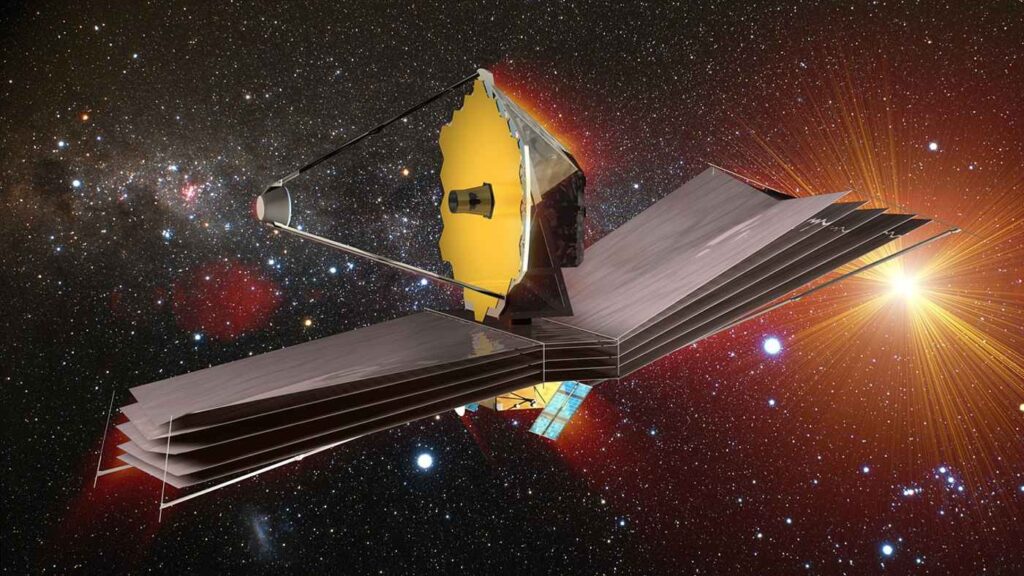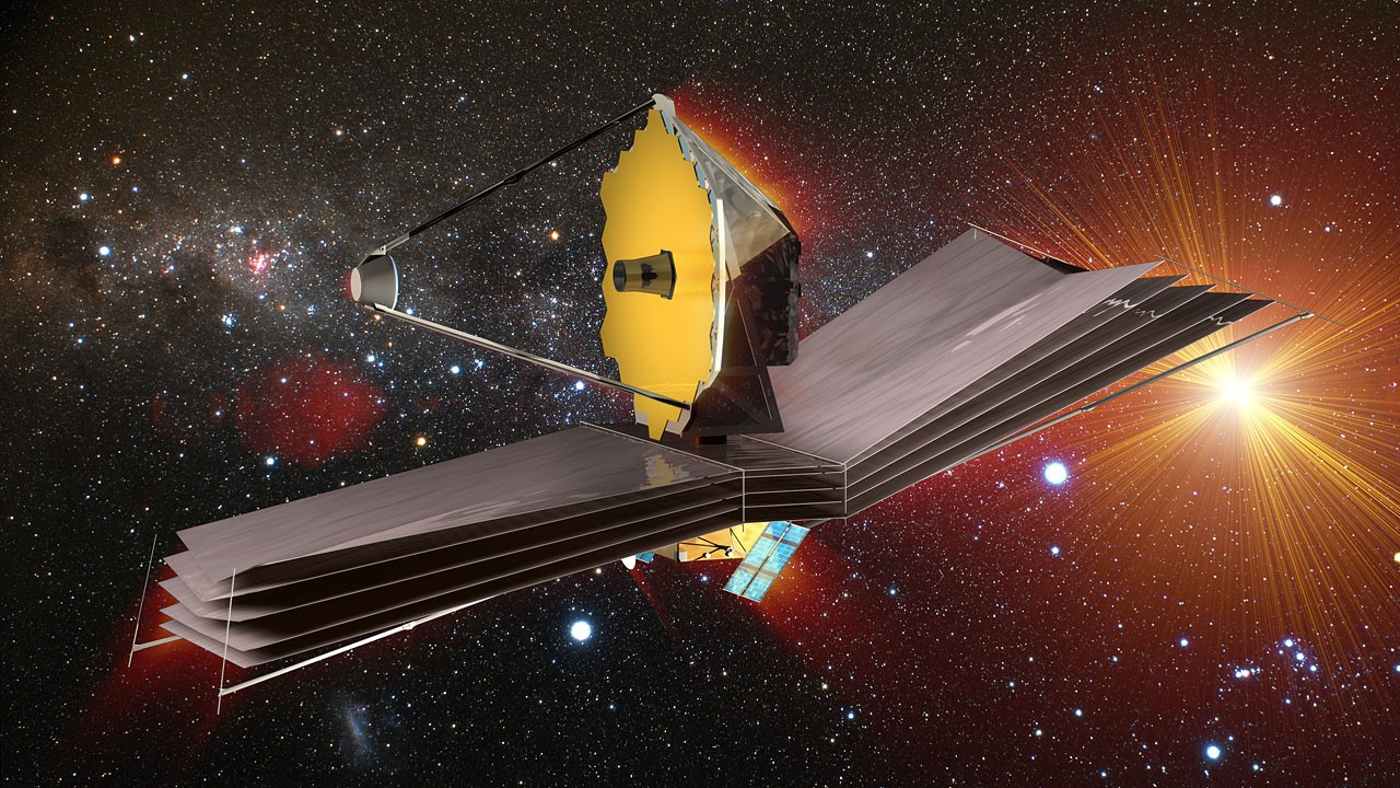
NASA’s James Webb Space Telescope officially launched on December 25. Its mission? To seek the light from the first galaxies in the early universe and to explore our own solar system, as well as planets orbiting other stars, called exoplanets.
“The James Webb Space Telescope represents the ambition that NASA and our partners maintain to propel us forward into the future,” said NASA Administrator Bill Nelson. “The promise of Webb is not what we know we will discover; it’s what we don’t yet understand or can’t yet fathom about our universe. I can’t wait to see what it uncovers!”
Ground teams began receiving telemetry data from Webb about five minutes after launch.
The Arianespace Ariane 5 rocket performed as expected, separating from the observatory 27 minutes into the flight.
The observatory was released at an altitude of approximately 870 miles (1,400 kilometers). Approximately 30 minutes after launch, Webb unfolded its solar array, and mission managers confirmed that the solar array was providing power to the observatory.
Thomas Zurbuchen, associate administrator for the Science Mission Directorate at NASA Headquarters in Washington, said, “Webb’s scientific promise is now closer than it ever has been. We are poised on the edge of a truly exciting time of discovery, of things we’ve never before seen or imagined.”
MORE: Cosmic Telescope Finally Captures Light From the Dawn of Time
The world’s largest and most complex space science observatory will now begin six months of commissioning in space. At the end of commissioning, Webb will deliver its first images.
Webb carries four state-of-the-art science instruments with highly sensitive infrared detectors of unprecedented resolution. Webb will study infrared light from celestial objects with much greater clarity than ever before. The premier mission is the scientific successor to NASA’s iconic Hubble and Spitzer space telescopes, built to complement and further the scientific discoveries of these and other missions.
“The launch of the Webb Space Telescope is a pivotal moment—this is just the beginning for the Webb mission,” said Gregory L. Robinson, Webb’s program director at NASA Headquarters. “Now we will watch Webb’s highly anticipated and critical 29 days on the edge. When the spacecraft unfurls in space, Webb will undergo the most difficult and complex deployment sequence ever attempted in space. Once commissioning is complete, we will see awe-inspiring images that will capture our imagination.”
LOOK: Astronomers Uncover the Largest Group of Rogue Planets Yet
The telescope’s revolutionary technology will explore every phase of cosmic history—from within our solar system to the most distant observable galaxies in the early universe, to everything in between. Webb will reveal new and unexpected discoveries and help humanity understand the origins of the universe and our place in it.
Sunshield success
On January 4, the telescope team announced it fully deployed the spacecraft’s 70-foot sunshield, a key milestone in preparing it for science operations.
“This is the first time anyone has ever attempted to put a telescope this large into space,” said Thomas Zurbuchen, associate administrator for NASA’s Science Mission Directorate at the agency’s headquarters in Washington. “Webb required not only careful assembly but also careful deployments. The success of its most challenging deployment – the sunshield – is an incredible testament to the human ingenuity and engineering skill that will enable Webb to accomplish its science goals.”
CHECK OUT: Huge Supply of Water Discovered on Mars, Frozen at the Bottom of its Grand Canyon
The five-layered sunshield will protect the telescope from the light and heat of the Sun, Earth, and Moon. Each plastic sheet is about as thin as a human hair and coated with reflective metal, providing protection on the order of more than SPF 1 million. Together, the five layers reduce exposure from the Sun from over 200 kilowatts of solar energy to a fraction of a watt.
This protection is crucial to keep Webb’s scientific instruments at temperatures of 40 kelvins, or under minus 380 degrees Fahrenheit – cold enough to see the faint infrared light that Webb seeks to observe.
“Unfolding Webb’s sunshield in space is an incredible milestone, crucial to the success of the mission,” said Gregory L. Robinson, Webb’s program director at NASA Headquarters. “Thousands of parts had to work with precision for this marvel of engineering to fully unfurl. The team has accomplished an audacious feat with the complexity of this deployment—one of the boldest undertakings yet for Webb.”
The world’s largest and most complex space science observatory has another 5 1/2 months of setup still to come, including deployment of the secondary mirror and primary mirror wings, alignment of the telescope optics, and calibration of the science instruments. After that, Webb will deliver its first images.
We’ll keep you updated as news from the Hubble telescope’s successor–a joint effort with ESA (European Space Agency) and the Canadian Space Agency–continues to unfold.
(LEARN more about this historic launch in the video below.)
Source: NASA
SHARE This Far Out News From Space With Those in the Know…




















